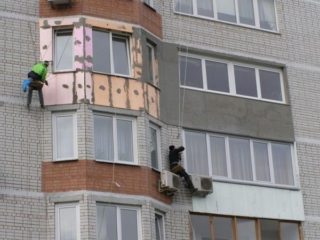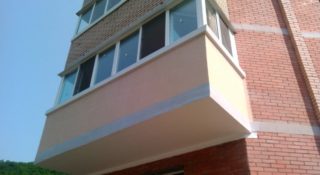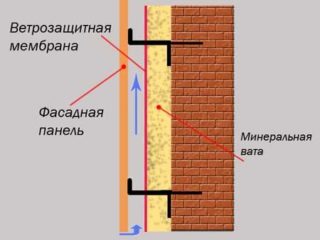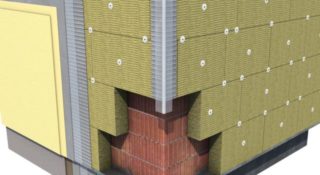Most houses do not provide heating on the balcony, so in winter this part of the apartment is difficult to use. The solution to the problem is the insulation of the outer wall of the loggia, and if necessary - and the side. So heat loss is reduced, it becomes much more comfortable in a room located next to the balcony.
Two main ways to insulate a balcony
The choice of the method of warming the loggia so that it is warm in winter depends on the material of which the wall is made. In second place is the desired degree of thermal insulation: raising the temperature in the room or preparing the balcony for year-round use. On the third - aesthetic ideas of the owners.
During work, the material is attached in two different ways. The first is from the inside of the loggia, it is technically simpler, but it reduces its area. The second is the insulation of the balcony outside. On the ground floor, such work is easy to do with your own hands, higher - you will need the help of specialists in high-altitude work.
Wet or plaster facade
This method is called wet because it uses an adhesive surface. Suitable for warming the loggia from the outside and from the inside. On a pre-prepared smooth wall in layers applied:
- construction glue;
- insulation;
- reinforcing mesh;
- plaster;
- decorative finish.
Each composition takes time to dry, after which you can move on to the next layer. The advantages of this option of warming the loggia are durability, low load on the parapet and ease of operation. Available even to a layman. Cons - suitable only for flat walls, demanding on weather during repairs: only in summer or early autumn, on dry warm days.
Ventilated dry facade
This loggia insulation technology is suitable for outdoor use because it takes up a lot of space.
A frame is used, between it and the wall there is a gap allowing free passage of air.
The advantages of the ventilated facade are reliable insulation, the absence of condensate. Cons - weight, laborious design, limited selection of materials.
Effective external insulation conditions
Before warming the balcony from the outside, you need to take three important steps:
- strengthen the parapet;
- replace double-glazed windows;
- coordinate work.
A parapet is a fence made of wood, metal or plastic. In old houses, it is not designed for the weight of new double-glazed windows and insulation. Without preliminary strengthening, it will collapse. They use metal fittings, a brick inside the balcony or a complete replacement of the parapet with brickwork.
Replacing double-glazed windows before warming the balcony from the outside will help reduce heat loss. The reason for the penetration of cold air into the house is cracks. Most often, wooden frames suffer from this, but plastic ones are not without such a drawback.
Structures on the external wall of the building change its appearance, affect the technical characteristics, and may cause inconvenience to neighbors. Therefore, such work requires coordination. If there are no documents, regulatory authorities may require removal of insulation.
External insulation of the balcony requires preparation - only then it will be effective and legal. Incorrect preliminary work will nullify all thermal insulation efforts.
Material Selection Criteria
A number of requirements are made to a heater, to which it must comply:
- thermal insulation efficiency;
- the ability to pass moisture from the inside out, but not from the inside in;
- chemical inertness;
- resistance to corrosion, decay, mechanical damage;
- lack of environment for the development of harmful microorganisms;
- durability;
- fire resistance.
Materials that do not meet these requirements, it is impossible to insulate the balcony from the outside. If mistakes are made, the consequences will be unpleasant. In the best case, external insulation will quickly lose its appearance and working properties. At worst, it will become a source of danger for the residents of the apartment.
Universal option - mineral wool
Under all requirements, the loggia is insulated with mineral wool. This material is suitable for dry and wet applications on the outside or inside the balcony. For a dry ventilated facade, mineral wool is the only completely safe material.
Manufacturers produce stone wool of different densities, so that when warming the loggia, the moisture circulation is properly organized. A denser layer is laid on the wall, a less dense layer is on the second or third level. So moisture freely leaves the room, but does not penetrate from the street, and condensation does not form.
Minvate alternatives
In addition to mineral wool, other materials are used to warm the plastic fencing of the balcony from the outside. The most common of them are polystyrene and foam. Polyfoam is cheap, resistant to moisture, bacteria do not develop in it. A serious drawback - it easily lights up. Penoplex is durable (up to 40 years of service), resistant to moisture and mechanical damage. It melts during a fire, releasing toxic substances.
The material is selected based on the requirements of the owners of the apartment. In wet climates, penoplex will be more effective. Minvata is a universal, but not the only solution.
Advantages and disadvantages of external insulation
The benefits of warming the balcony are immediately noticeable: an increase in temperature in the room next to the loggia and the ability to use additional living space. If you organize heating (electric or oil heater), you can get a full-fledged small room.
The use of outdoor fashion:
- the area of the balcony remains the same;
- less risk of condensation;
- more effective thermal insulation.
Disadvantages - external insulation is laborious, on all floors above the first it should be installed by specialists. Mandatory agreement.
Warm the balcony or not - the owner decides to his own taste. But when choosing a method of work, external factors should be taken into account.
Surface preparation for work
If all the conditions for work are met (the parapet is strengthened, double-glazed windows without cracks, permission is obtained), it is time to start preparing the surface. Stages:
- remove the old insulation from the wall on the balcony, if any;
- align the wall;
- wash the surface, remove debris.
For a plaster (wet) method of insulation, the wall should be as even as possible, for a ventilated method it is enough to remove large flaws.
Dry Process Flow
Stages of work on a ventilated insulation device:
- sealing cracks;
- wall preparation;
- fastening of mineral wool (plastic dowels are used) in several layers and a windproof film;
- installation of the battens with a gap between it and the wall;
- installation of the outer layer.
A more economical option is to attach the crate to the wall, stick insulation between its ribs and strengthen it with a windproof film.
It is necessary to warm the loggia in this way if it is constantly used, including in winter. In other situations, other methods will work.
Necessary tools
For work in a plaster way, you need brushes or spray guns for glue, levels, putty knives for plaster, containers for diluting mortars. It is inexpensive compared to materials.
The dry method requires more various tools - for mounting the crate, fixing the insulation. Specialists have their own toolkits, and the owner does not have to buy them.
The external wall of the balcony can be insulated in several ways. For any of these, a work permit is required. To fully solve the problem of a cold balcony, you need to combine these technologies with warming the floor and ceiling of the loggia with mineral wool.








